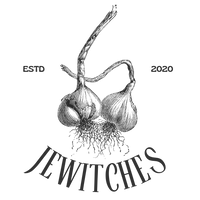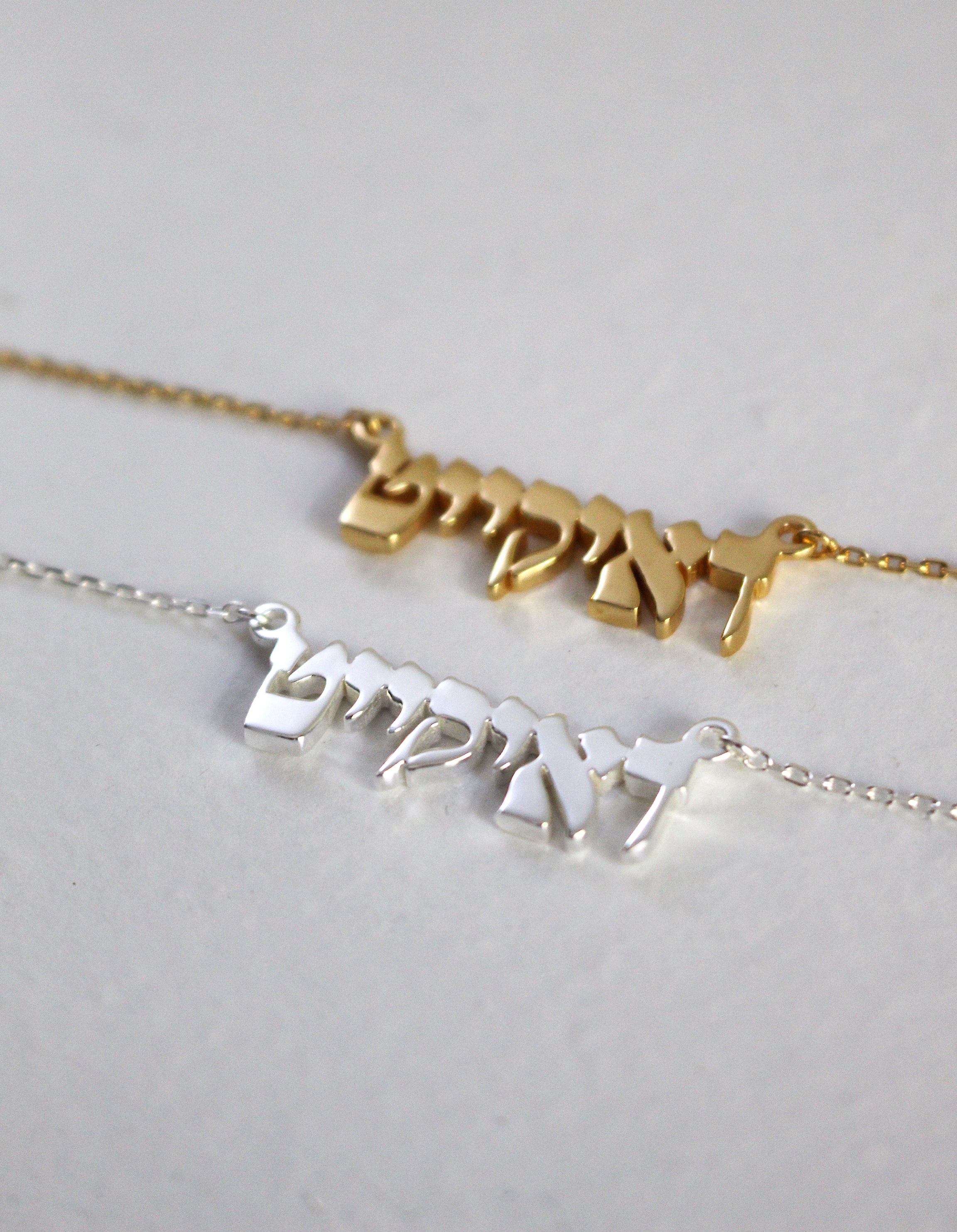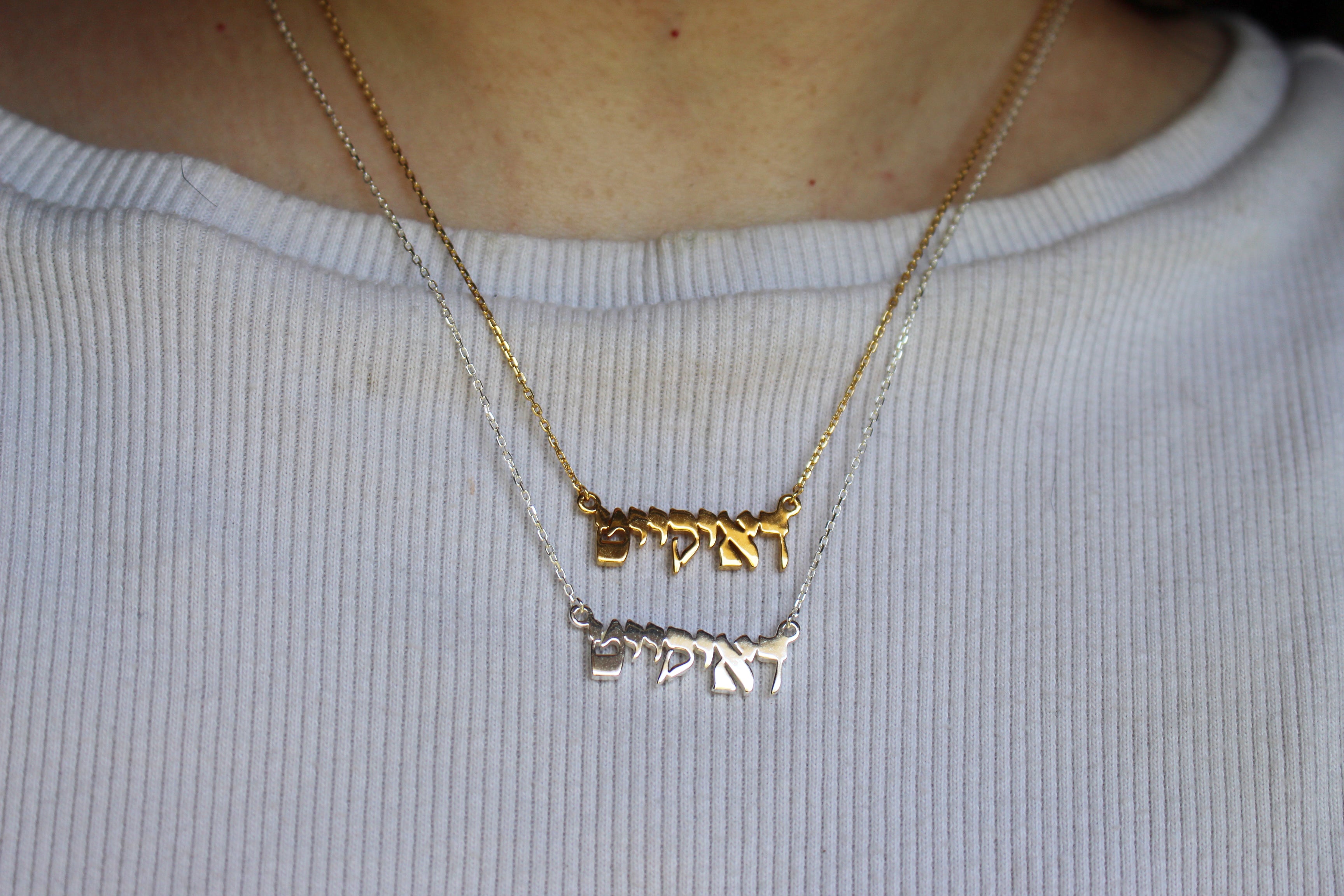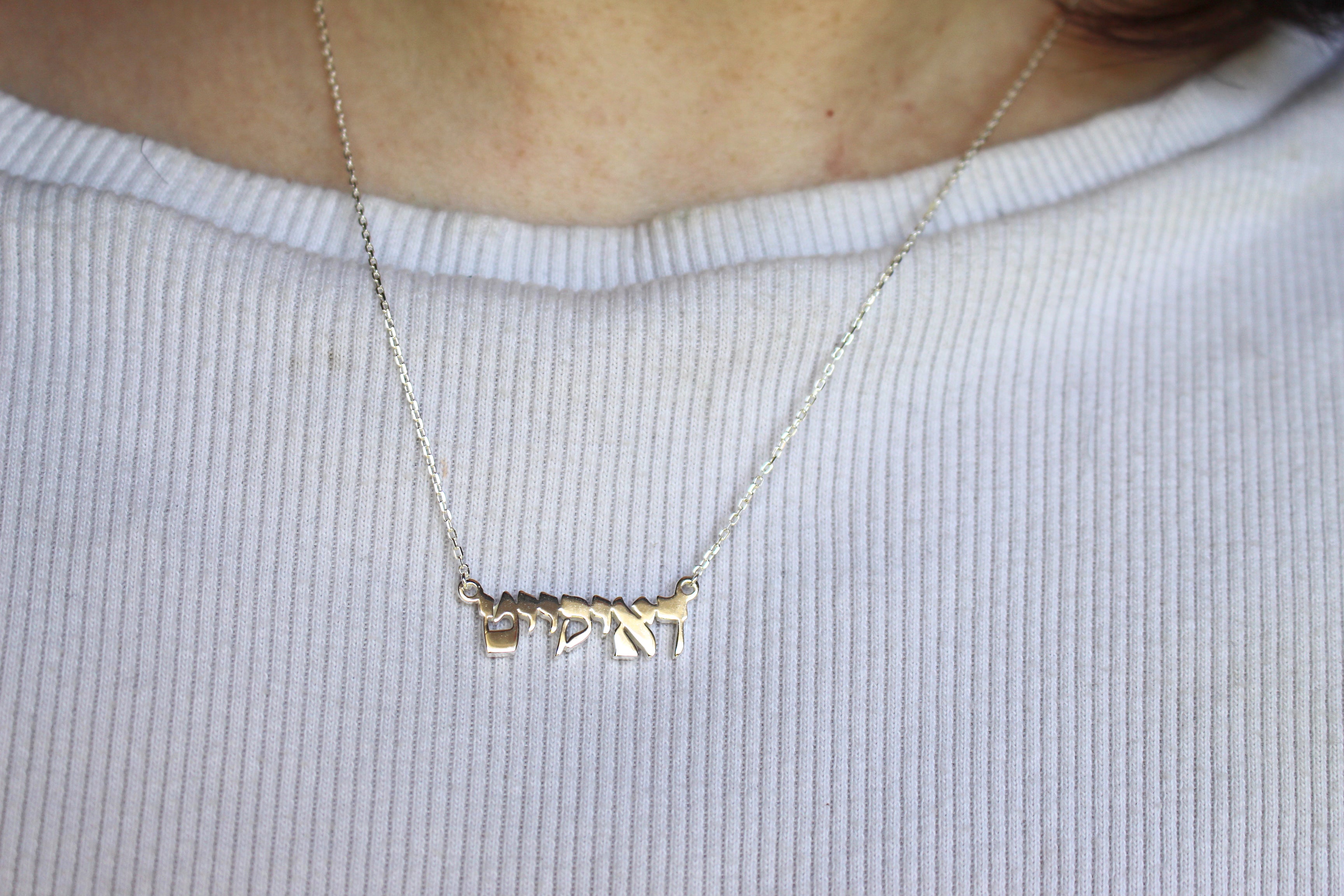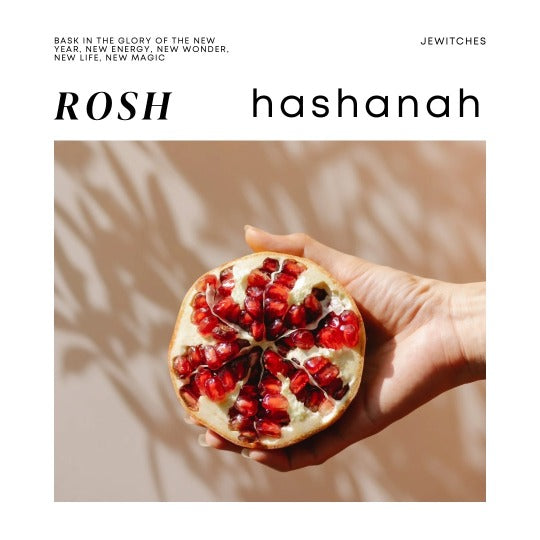Rosh HaShanah, the Jewish new year, lasts two days. It falls on the first of the Jewish month of Tishrei and celebrates the creation of the earth and humanity. Rosh HaShanah is one of Four Jewish new years.
In the month working up to Rosh HaShanah, Elul, we work on taking stock of our lives, ourselves, our actions. It is a month of spiritual inventory that doesn't end there. Rosh HaShanah ushers in the new year but encourages us to continue on the work; intertwining spiritual inspection and exalted joy.
While it is traditional to attend synagogue on Rosh HaShanah, there are always ways to enhance your experience of the holiday. Here are a ritual suggestions to celebrate Rosh HaShanah, infused with intention.
Light Candles
Lighting candles is a staple for most Jewish holidays, Rosh HaShanah included. On the first night of Rosh HaShanah, we light a minimum of two candles and say kiddush. However, there is an opportunity here to bring intention to this ritual!
Take the time to prepare your space and your candles. From anointing your candles with oils to simply picking out beautiful candle holders, set and prepare your space with intention. Focus on what you want to bring into the new year and what you want to leave behind. To anoint your candles, choose herbs that bring positive attributes to your life.
As you are not meant to touch or disturb your candles after lighting them, ensure that you have anointed them in such a way that they will not require adjusting or movement.
Once you have set your space, prepare to light your candles. After lighting, draw the energy and light of the candles into your heart three times and recite the following brachot:
Baruch atah Ad-dnai, Eloheinu Melech haolam, asher kid'shanu b'mitzvotav v'tzivanu l'hadlik ner shel (Shabbat v'shel) Yom Tov.*
Blessed are You, our G-d, Ruler of the world, who sanctifies us with mitzvot and calls upon us to kindle the lights of (Shabbat and) the Festival day/
Baruch atah Ad-nai, Eloheinu Melech haolam, shehechiyanu, v’kiy’manu, v’higianu lazman hazeh.
Blessed are You, our G-d, Ruler of the world, who sustained us and allowed us to arrive in this moment.
*If not performed on Shabbat, ignore the parenthesis.
Tashlich
The most famous of the traditions for Rosh HaShanah, Tashlich is a ritual to cast off sins. In Judaism, we know the cleansing nature of water. We cleanse ourselves in it, we wash our hands in it, and now, we cast off our sins into the depths of the water. Judaism idealizes ‘living water’, or mayim chaiyim, so many Jewish communities prefer to perform tashlich over living waters like rivers, lakes, or the ocean. However, it is also acceptable to use another body of water like a pond, well, spring, or container of water (like an aquarium). Tashlich comprises of throwing bread, sticks, stones, or other foods into the water. It is also a Kabbalistic practice to shake the ends of ones garments out.
There are some groups that require the water to have fish, while others believe it to reference any body of water. The reason that fish are preferable is multi-faceted: the eyeless nature of fish make them a protective symbol, as they are always watching. This also represents the nature of HaShem's eternal watchfulness and omnipresence.
Many prayers are said while performing tashlich, including the reading of Michah 7:19, where the practice stems.
Tashlich provides an opportunity not only to cast off ones sins, but to shed fears, doubts, and negativity, or anything that no longers serves you. What do you wish to leave in this year? What is no longer bringing you joy, wonder, and happiness? What is holding you back? Cast it to the depths of the sea.
Traditional Foods
The power of food is not lost on us. To bring in the new year, we have specific foods that are eaten to honor it. The seven sacred species: barley, wheat, dates, figs, grapes, pomegranates, olives are frequently eaten during this time, as are foods that bring in sweetness, prosperity, and joy into the coming year. For example, pomegranates, for as much joy as there are seeds in a pomegranate. Alternatively, there are supposedly 613 kernels in a single pomegranate, the same number as mitzvot in Judaism. Different traditions have different symbolism. For example, many Sephardic Jews eat leek say a brachah for their enemies to be cut down or cut off from HaShem. Mizrahi Jews often celebrate with a formal seder that include the nine simanin (symbolic signs) as food. Beans, fish, leeks, beets, dates, squash, pomegranate, apples in honey (date or regular honey), and meat from animal head (or a head of lettuce or cabbage for vegans and vegetarians).
Another wonderful Rosh HaShanah food is that of round Challah. Throughout the year we eat Challah that is braided straight, but during the High Holidays we honor the "head" of the year by eating round challah. You can enjoy a challah studded with raisins, chopped up nuts and dates, or drizzled with honey.
Taking time to cook, bake, and spend time in the kitchen is a wondrous way to connect with not only the foods, but the traditions of our ancestors. See if you can scrounge up family recipes, or create your own! The kitchen has traditionally been the center of the Jewish home, so enjoying your time there is an ideal way to feel connected.
Moon Rituals
In our excitement about Rosh HaShanah, we often forget that it is also a New Moon. As the new moon is always a holiday in Judaism, finding a way to connect with the energy of the new: moon, month, and year, is of the greatest importance.
Beneath the moon, light your two candles*. Inhale the energy you wish to carry with you, and exhale the energy you wish to release. Sit with your candles until they burn down. Don't have a ton of time? Use something like birthday candles!
Anyone who blesses the month in its time, is as if they are greeting the Divine Presence. (Talmud - Sanhedrin 42a)
This is a time to pray for what you are looking to bring into your life, as well as to contemplate what you wish to leave behind. Exactly how you do this is up to you.
Psalms are extraordinarily powerful and introspective. Psalm 121 is popular for protection, while it is traditional to pray Psalm 27 every day of Elul. Whether you've done it daily or not done it once, consider reciting it beneath the moon.
*Omit if living in an area where an open flame outdoors would be unsafe.
Wear Something New & White
For many Jews, it is customary to welcome in the New Year in white clothing or new clothing. Wearing white is an attempt to elevate oneself as well as remove from ourselves our sins and impurities. New clothing represents the importance of the occasion and is a common theme among important holidays or occasions.
Meditation
Some choose to honor Rosh HaShanah with a meditation focusing on the year ahead. This is a wonderfully auspicious time to set intentions; New Years resolutions but also so much more than that. Meditation can sit in contemplation of your own inner thoughts, rather than to focus on the absence of thoughts. Now, during this time of manifestation beneath the New Moon, we can focus on what we want to bring into our lives.
As mentioned in our post for Elul, here are a few basic steps to successful meditation:
Find a quiet space. This can be seated, kneeling, laying down, or even standing up. Choose a position that is comfortable for you.
Set your space. For some, this includes lighting candles, incense, burning botanicals, using sound to cleanse the space, or a combination of all.
Mark the beginning of your preparation by stating aloud that you are ready to do this work:
I am prepared. Hin'ni mukhan. הנני מוכן.
Use this time to center yourself. Take as long as you need before beginning. Many choose to close their eyes, but this is entirely up to you.
Then, set your intention for the next year. Visualize what you want, feel it in your bones. Focus only on the positive and what you wish to bring into your life. This is a time for honoring all of the positivity that you wish to fill your life with. We throw out what we do not want at Tashlich and focus now on what we do want.
The Shofar
The shofar, a ram's horn, is a sacred sound. It cleanses, renews, and causes us to rejoice. It is a mitzvah to hear the shofar on Rosh HaShanah.
Many Jews are still practicing COVID safe protocols which means you may be able to locate an outdoor shofar blowing. If possible, find a live blowing of the shofar online and listen, or, if you have a shofar at home, make sure to take part.
Building your own rituals
The things listed above are suggestions, with each family and group of Jews creating their own rituals as we go. Not every person will find meditation useful, while others laugh at the idea of going and sitting beneath the new moon. The importance of rituals for Rosh HaShanah lies within the intention. Focus on what you wish to bring into your life in the new year and let slip away what you are ready to release. You have ideally spent the month of Elul in introspection, now is the time to begin to ask for what you want.
